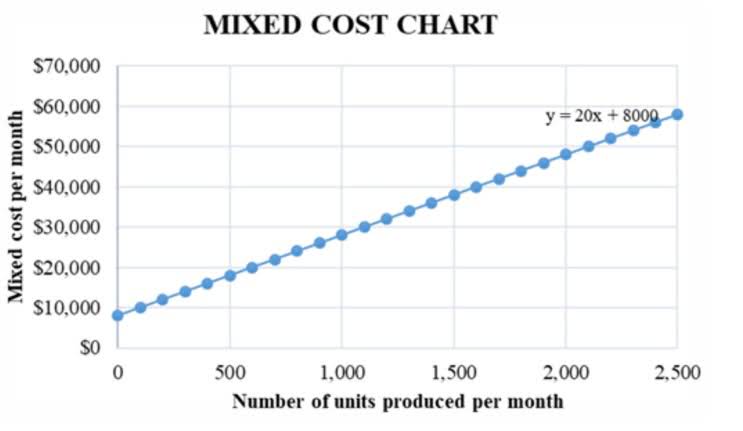![]()
The need for timely reports has led to the preparation of more frequent reports, such as monthly or quarterly statements. Indeed, given access to finance, workable recovery strategies, or other resources guaranteeing continuity, a company may nonetheless be a going concern notwithstanding losses. The Going Concern Concept holds that a company will carry on its operations for the foreseeable future and has no plan or need to drastically reduce its size of operations.
Accounting Principle # 1. Cost Principle:
Thus, the main purpose of this chapter is to draft the definitions about the going-concern, adopting several sources and perspectives of analysis. Many definitions of the going-concern in the accounting research are provided using qualitative analysis and adopting some bibliometric investigations. As a double face of one coin, the going-concern can be regarded as a “key factor” or “tipping factor” in the analysis of the company’s ongoing and lifecycle, without missing to also introduce the business continuity meaning. However, when we consider the concept of going concern, such a change in asset value will be ignored in the short run. The principle highlights the assumption that companies intend to keep assets and generate profits in the future—assets won’t be sold in between.
Meet our team
The going concern concept states that a business will continue its operations for the foreseeable future. This implies that the company will not be forced to discontinue its operations and liquidate its assets at extremely low costs. The assumption that a business is expected to continue in future affects the timing, nature and amount on which accounting transactions are recorded. For example, one criteria for classification of assets and liabilities into current and non-current is whether they are realized/settled within normal course of business. In a non-going concern basis, income, expenses, assets, liabilities and equity are recorded going concern at values that reflect the winding up of business, i.e. assets are recognized at values they are expected to fetch if sold right away, etc.
Use in risk management

This allows stakeholders to assess the company’s financial position, performance, and cash flows based on ongoing business activities. There are several indicators that may raise doubt about an entity’s ability to continue as a going concern. These include financial indicators such as negative cash flows from operations, adverse key financial ratios, or substantial operating losses. Other warning signs could be defaults on loans, denial of credit by suppliers, or restructuring of debt. External factors such as significant legal challenges, loss of a major customer, or changes in government policy that negatively affect the entity can also be indicative of going concern issues. Management must be vigilant in monitoring these indicators and auditors must thoroughly investigate any red flags to determine their impact on the going concern assessment.
The Role of Management Representation Letters in Audits
Environmental risks, like natural disasters, further compound challenges for businesses without robust contingency plans. The going concern approach utilizes the standard intrinsic and relative valuation approaches, with the shared assumption that the company (or companies) will be operating perpetually. In the context of corporate valuation, companies can be valued on either a going concern basis or a liquidation basis. In the absence of the going concern assumption, companies would be required to recognize asset values under the implicit assumption of impending liquidation. A going concern is a business that is financially stable and is expected to continue operating indefinitely.
- The principle purports that every decision in a company is taken with the objective in mind of running the business rather than that of liquidating it.
- It assumes that an entity will continue its operations into the foreseeable future without any intention or need to liquidate.
- More specifically, companies are obligated to disclose the risks and potential events that could impede their ability to operate and cause them to undergo liquidation (i.e. be forced out of business).
- For the past 52 years, Harold Averkamp (CPA, MBA) hasworked as an accounting supervisor, manager, consultant, university instructor, and innovator in teaching accounting online.
- Helping clients meet their business challenges begins with an in-depth understanding of the industries in which they work.
- For a company to be a going concern, it must be able to continue operating long enough to carry out its commitments, obligations, objectives, and so on.

Under this accounting principle, it defers revenue and expenses according to other principles of accounting. If the going concern assumption did not hold true, then it would not be possible to record prepaid or accrued expenses as such. An example of the application of going concern concept in business is the computation of depreciation on the basis of the expected economic life of fixed assets rather than their current market value. Companies assume that their business will continue for an indefinite period of time and that the assets will be used in business until they are fully depreciated. Another example of this concept is the prepayment and accrual of various business expenses.
Monetary Unit Assumption

Instead, continuous production, extensive use of credit and long-lived resources, and over-lapping cycles of activity complicate the evaluation of periodic activities. Since an accounting entity is an artificial creation, it is essential to know Accounts Payable Management to whom its resources belong or what purpose they serve. It is also important to know what kind of resources it controls, e.g., cash, buildings or land. While the Going Concern Assumption is pivotal for reliable financial reporting, its application presents several challenges that accounting professionals must navigate. The Going Concern Assumption encompasses several critical aspects that are vital for accurate and reliable financial reporting.
Without any significant information to the contrary, it is retained earnings always assumed that the entity will be able to meet all its obligation without significant debt restructuring and continue to be a going concern entity. In effect, equity shareholders and other relevant parties can then make well-informed decisions on the best course of action to take with all material information on hand. If a company is not a going concern, its management is required to disclose this fact and must provide the reasons for the negative conclusion. The statements should also show management’s interpretation of the conditions and its plans to mitigate them. According to GAAP guidance, disclosures must be made as soon as a conclusion of substantial doubt is reached. This determination, based on a study of the company’s financials, is generally understood to be good for at least 12 months.
- This revaluation may be used to price the company for acquisition or to seek out a private investor.
- Where a formal definition is provided by the Conceptual Framework for Financial Reporting (the Conceptual Framework), that definition is given, followed by an elaboration of the key points of that definition that candidates need to understand.
- Employees may perceive instability, leading to higher turnover or recruitment challenges.
- If the company is not expected to continue operations i.e. it is required (or reasonably expected) to wind up, its financial statements are prepared using break-up basis.
- Real-world examples illustrate the practical application and impact of the Going Concern Assumption in financial accounting.
- The value received from the sale is usually the asset’s market value, less sale expenses.

The dual aspect means that each party in a transaction is affected in two ways by the transaction and that every transaction gives rise to both a debit entry (Dr) and a credit entry (Cr). Consistency is a straightforward principle and is intended to enhance financial reporting by making it easier for users to make comparisons. In that sense it contributes to the achievement of comparability which is one of the qualitative characteristics of useful financial information (see the related article ‘Qualitative accounting characteristics’). Although the definition might seem a little complicated at first reading, this is essentially a simple idea.
